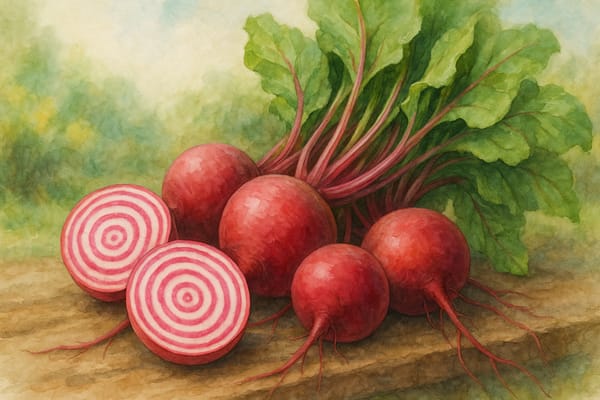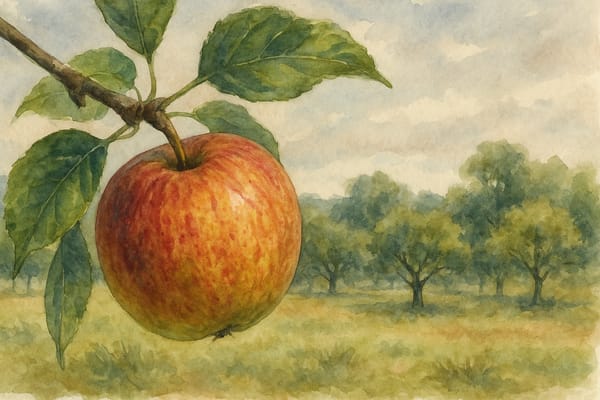There’s a quiet joy in slicing into a freshly pulled beetroot and revealing something unexpected — not the familiar deep crimson, but a surprise swirl of candy-pink and ivory-white, like ripples in a sugared tidepool. This is Chioggia Barbabietola, the old Italian variety that turns a humble root vegetable into a work of art.
Originally bred near the Venetian lagoon in the 1800s, Chioggia’s charm lies in its contrast: rustic in growth habit, yet delicate in appearance. In Cornish soil, it thrives with a little care and spacing, rewarding growers with sweet, tender roots and lush leafy tops — both entirely edible and visually striking.
Sowing and Spacing
Sow seeds directly where they’ll grow from March through July, or even into early August in milder coastal gardens. Chioggia matures quickly — typically in 50–60 days — making it a good candidate for successional sowing. To achieve perfectly rounded roots, space each seed cluster 10cm apart in rows 25cm apart. Thin young seedlings to the strongest in each group and enjoy the extras as tender microgreens.
Soil and Site
Beets are best in fine, well-drained soil enriched with compost or old manure. In Cornish gardens with heavier ground, raised beds or deep containers can give better results. Avoid fresh manure at planting — it tends to encourage leafy growth at the expense of roots. A pH between 6.5 and 7 is ideal.
Watering and Feeding
Like all root crops, Chioggia appreciates consistent moisture. Water deeply once or twice a week rather than little and often. In dry spells, mulching around the plants will help retain soil moisture and keep the roots from becoming woody. A mid-season feed with liquid seaweed can support steady growth, though most healthy soil won’t require much extra.
Growing On and Companion Ideas
Chioggia pairs well with leafy herbs like dill or parsley and enjoys the company of onions, lettuce, and bush beans. Avoid planting too near climbing crops or sprawling courgettes, which may shade the young beet plants.
The foliage itself is worth noting — soft, glossy, and often streaked with pinkish veins. In the ornamental kitchen garden, it offers as much beauty above ground as below. Pick a few outer leaves while the roots mature and use them just like chard or spinach.
Harvesting and Kitchen Use
You’ll be able to lift your first beets from early summer onwards, harvesting at golf-ball size for sweetness and texture. Chioggia’s signature rings tend to fade with boiling, so if you want to preserve its kaleidoscope pattern, slice thinly and serve raw in salads, lightly pickle, or roast gently to retain colour and sweetness.
The roots store well in a cool, dark place — but honestly, they rarely last long. The joy of lifting them fresh and warm from the earth is too good to resist.











